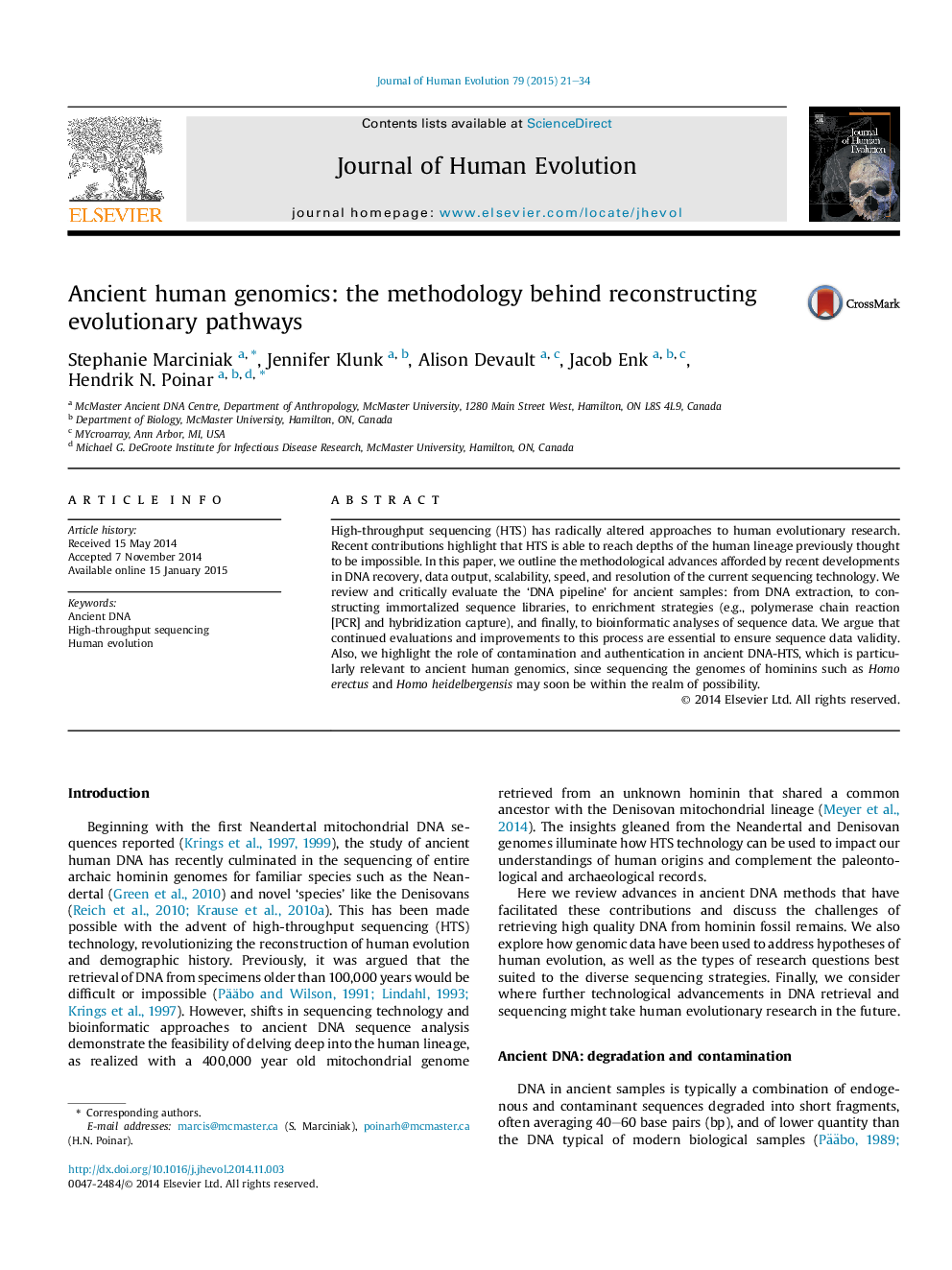| Article ID | Journal | Published Year | Pages | File Type |
|---|---|---|---|---|
| 6389177 | Journal of Human Evolution | 2015 | 14 Pages |
High-throughput sequencing (HTS) has radically altered approaches to human evolutionary research. Recent contributions highlight that HTS is able to reach depths of the human lineage previously thought to be impossible. In this paper, we outline the methodological advances afforded by recent developments in DNA recovery, data output, scalability, speed, and resolution of the current sequencing technology. We review and critically evaluate the 'DNA pipeline' for ancient samples: from DNA extraction, to constructing immortalized sequence libraries, to enrichment strategies (e.g., polymerase chain reaction [PCR] and hybridization capture), and finally, to bioinformatic analyses of sequence data. We argue that continued evaluations and improvements to this process are essential to ensure sequence data validity. Also, we highlight the role of contamination and authentication in ancient DNA-HTS, which is particularly relevant to ancient human genomics, since sequencing the genomes of hominins such as Homo erectus and Homo heidelbergensis may soon be within the realm of possibility.
